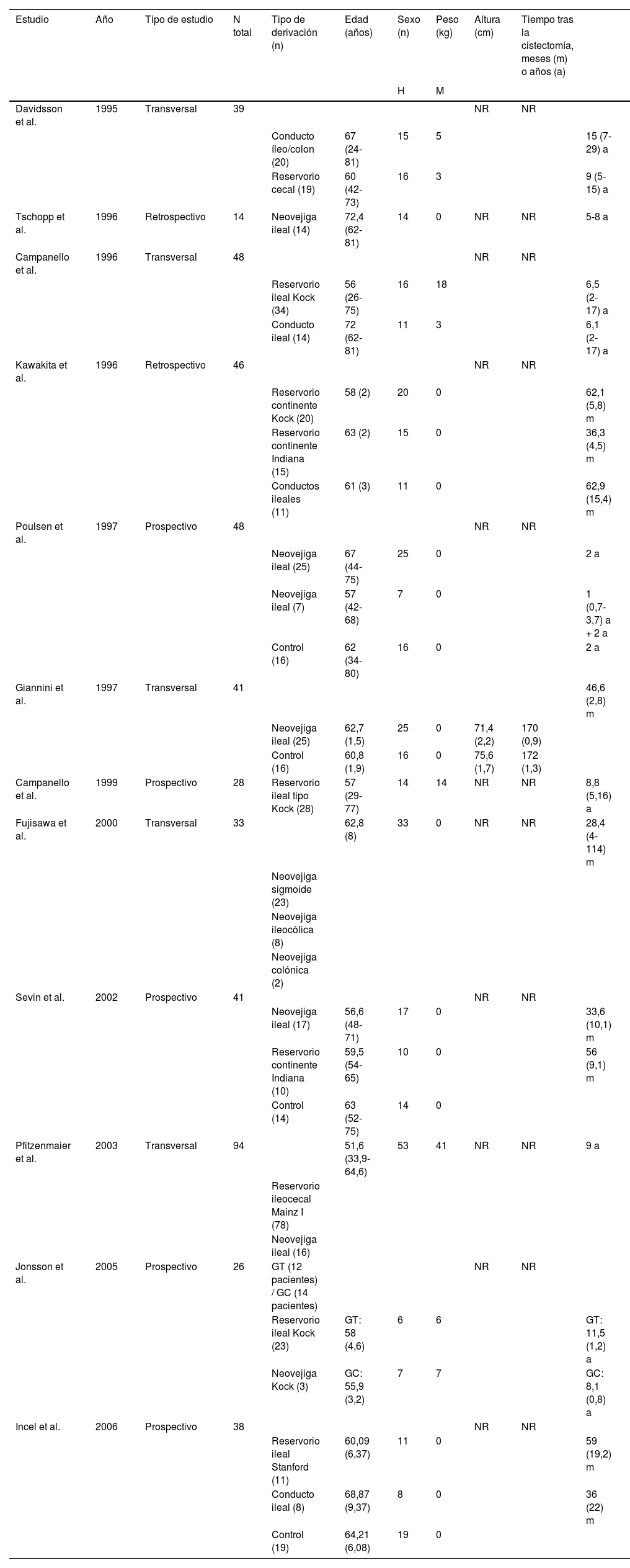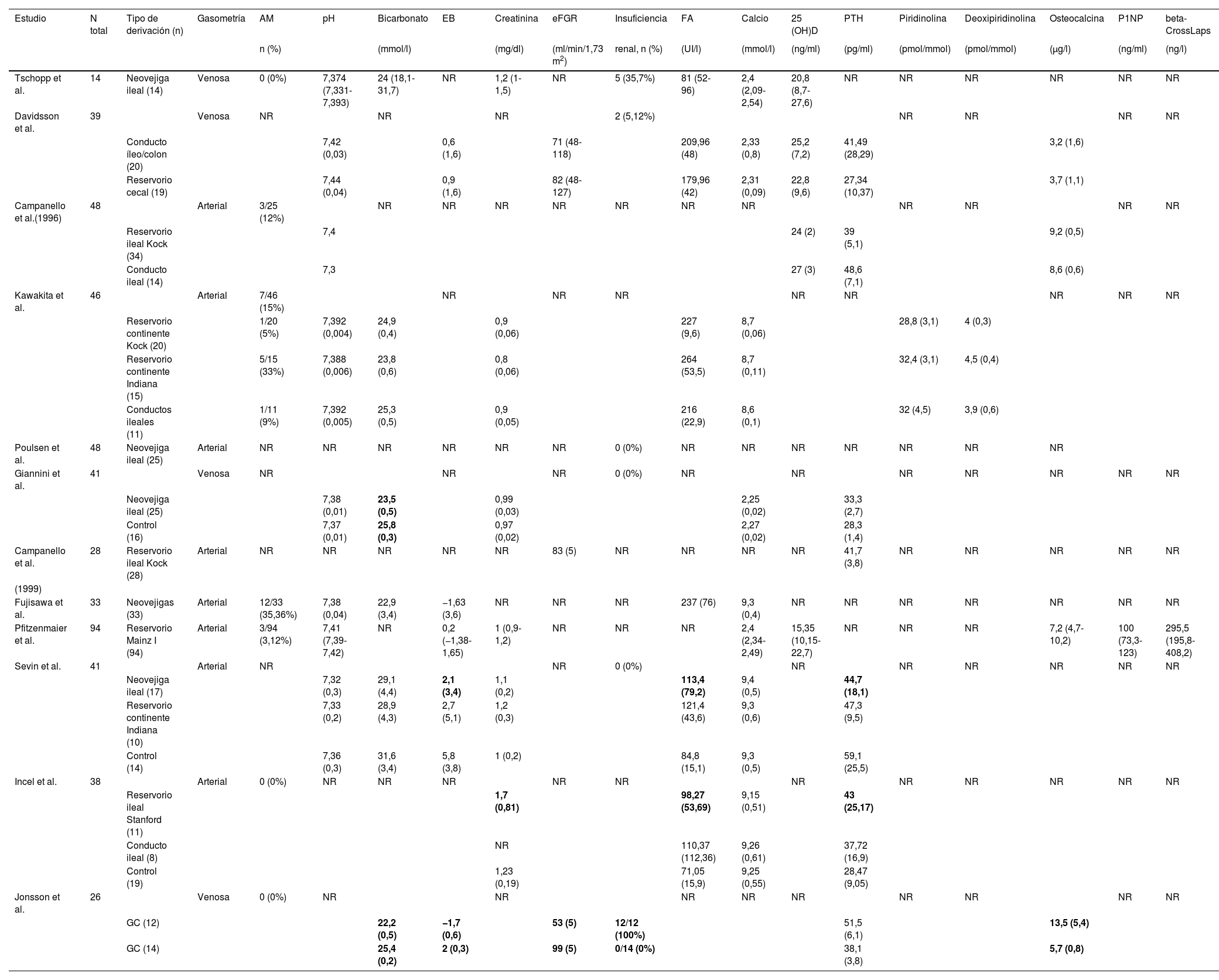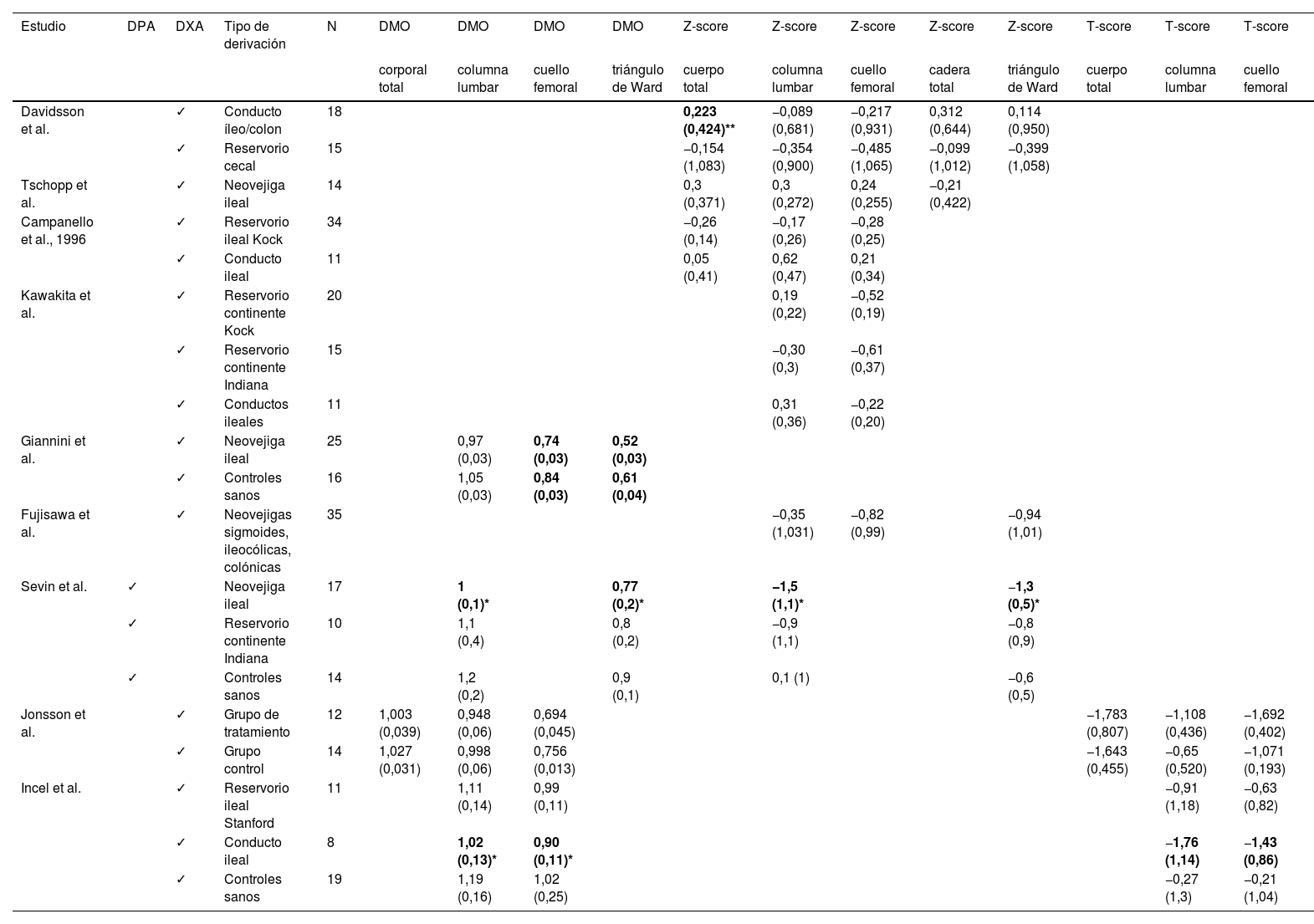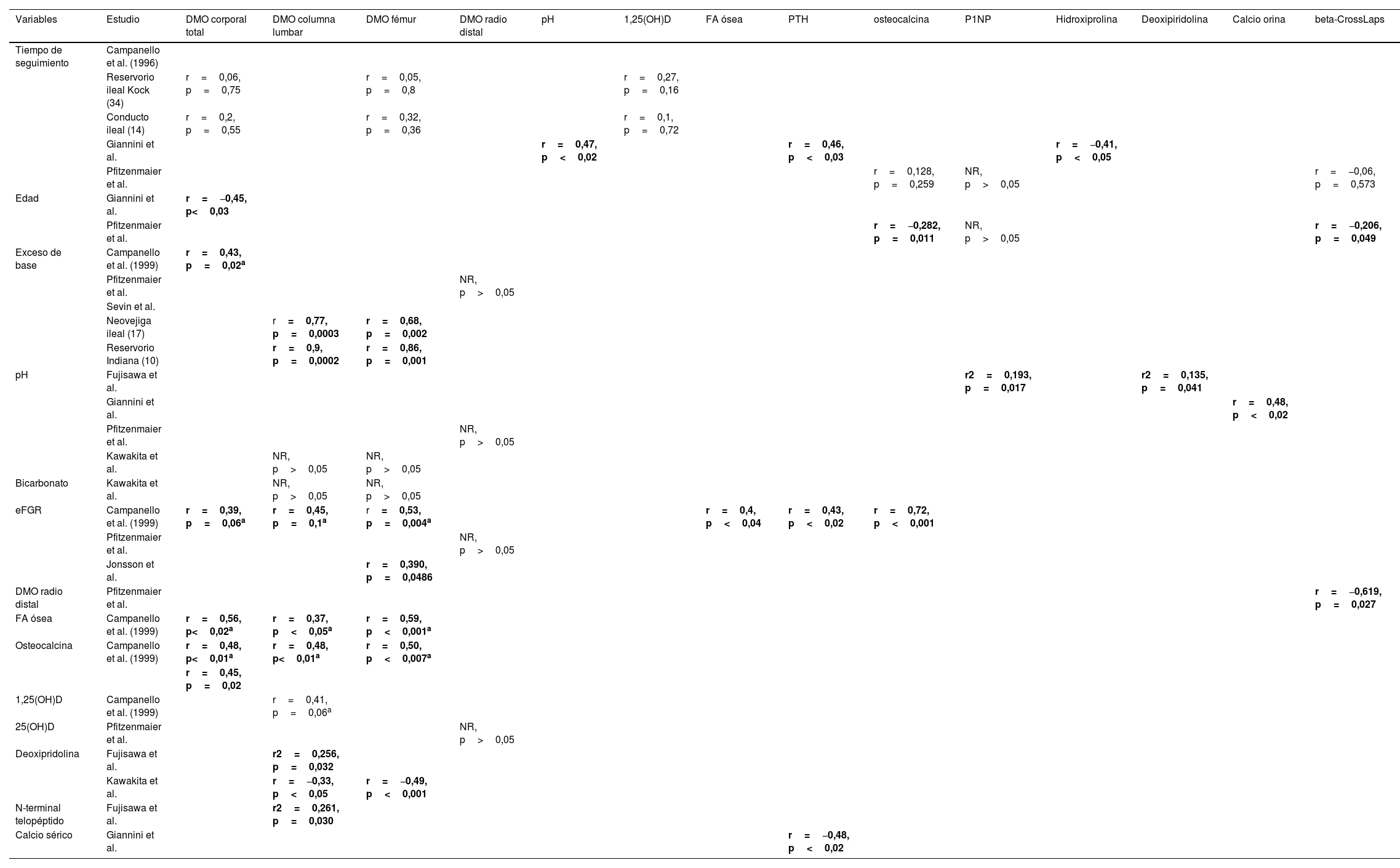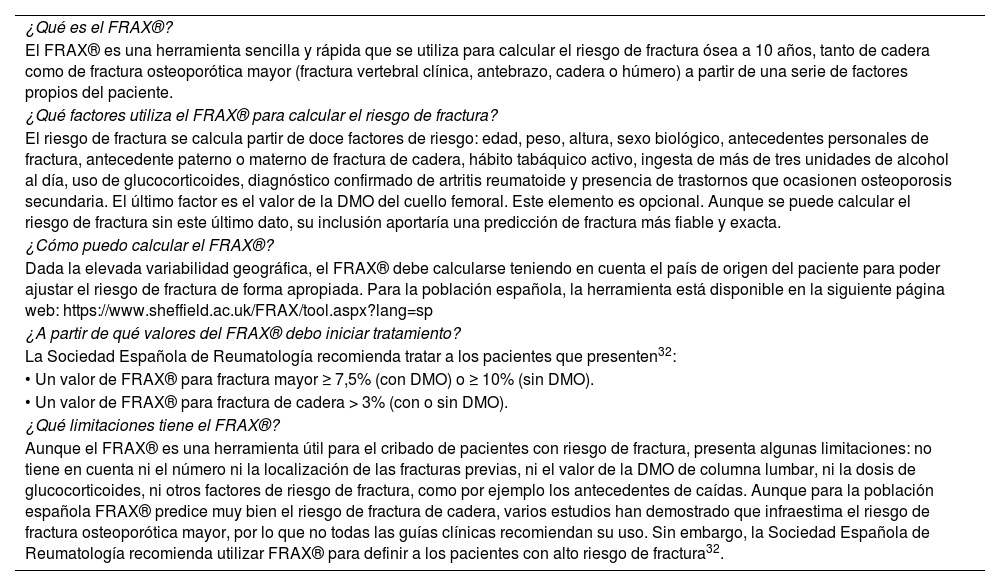Los pacientes intervenidos de cistectomía radical y portadores de derivaciones urinarias (DU) presentan un mayor riesgo de fractura ósea que la población general. Aunque se ha descrito una pérdida de densidad mineral ósea (DMO) en estos pacientes, todavía se desconoce el mecanismo por el cual siguen esta tendencia.
ObjetivoRealizar una revisión sistemática de la literatura para analizar la prevalencia de osteoporosis y alteraciones óseas en pacientes con DU ileales y los posibles factores de riesgo asociados.
Adquisición de evidenciaRevisamos todos los artículos publicados en PubMed® y Cochrane Library antes de diciembre de 2022 siguiendo las recomendaciones PRISMA.
Síntesis de evidenciaSe identificaron 394 publicaciones, de las cuales 12 cumplieron los criterios de inclusión, sumando un total de 496 pacientes. Seis de los doce estudios presentaron disminuciones en los valores de la DMO. La prevalencia de osteoporosis se especificó en tres artículos, oscilando entre el 0 y el 36%. Factores como la edad, el sexo, el índice de masa corporal, la acidosis metabólica y la función renal parecen influir en el deterioro del tejido óseo, mientras que el tipo de DU, el tiempo de seguimiento y los niveles de 25-hidroxivitaminaD y patahornoma ofrecen datos contradictorios o menos evidencia. La heterogeneidad de los estudios analizados podría sesgar estas interpretaciones.
Patients undergoing radical cystectomy with urinary diversions (UDs) are at increased risk of bone fractures compared to the general population. Although a loss of bone mineral density (BMD) has been described in patients with UDs, we still do not know with certainty why these patients follow this tendency.
ObjectiveWe performed a systematic review of the available literature to analyze the prevalence of osteoporosis and bone alterations in patients with ileal UD and the possible associated risk factors.
Evidence acquisitionWe systematically searched PubMed® and Cochrane Library for original articles published before December 2022 according to PRISMA guidelines.
Evidence synthesisA total of 394 publications were identified. We selected 12 studies that met the inclusion criteria with 496 patients included. Six of the twelve studies showed decreased BMD values. Prevalence of osteoporosis was specified in three articles, with values ranging from 0% to 36%. Risk factors such as age, sex, body mass index, metabolic acidosis and renal function appear to have an impact on bone tissue reduction, while type of UD, follow-up, 25-hydroxyvitaminD and parathormone had less evidence or contradictory data. The heterogeneity of the studies analyzed could led to interpretation bias.
ConclusionsUDs are associated with multiple risk factors for osteoporosis and bone fractures. Identifying patients at highest risk and establishing diagnostic protocols in routine clinical practice are essential to reduce the risk of fractures and the resulting complications.









